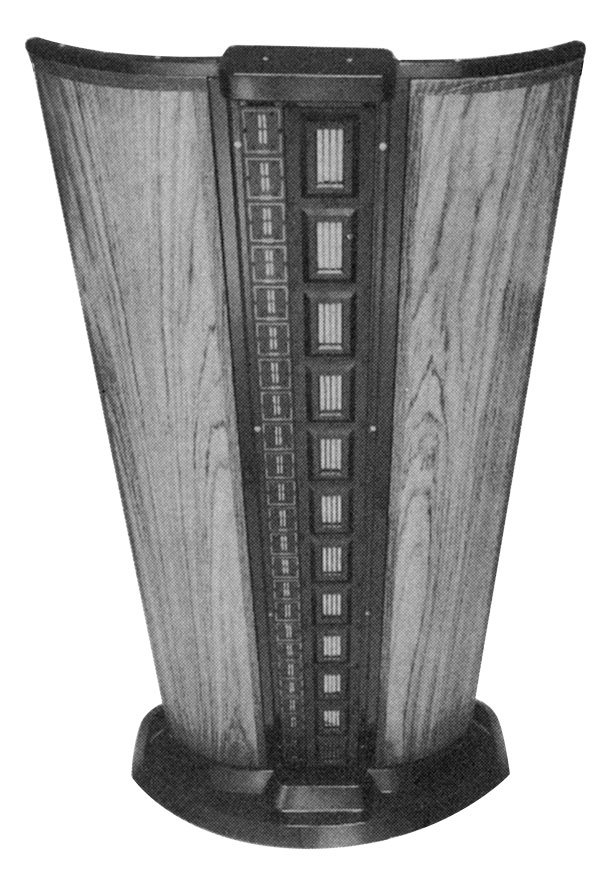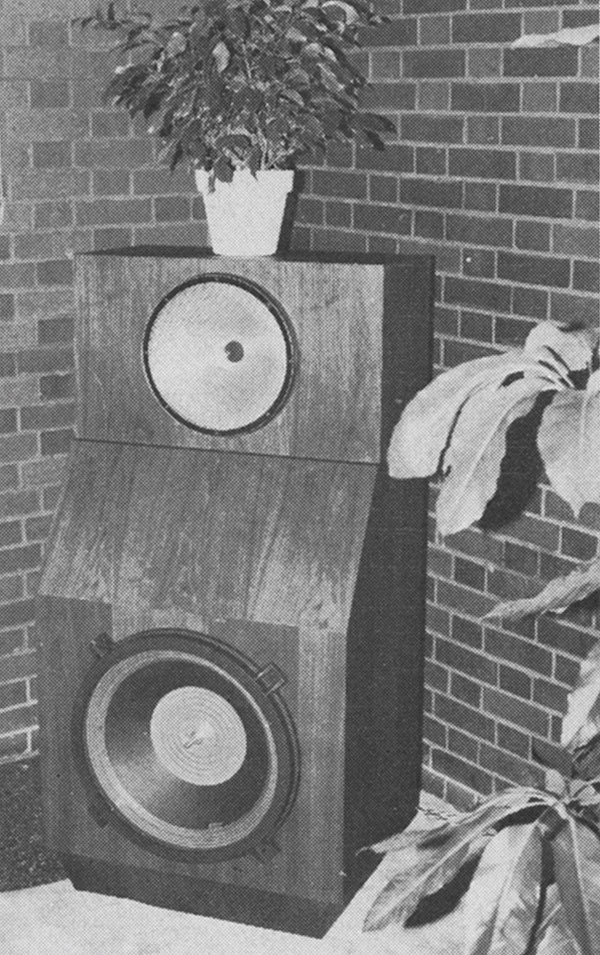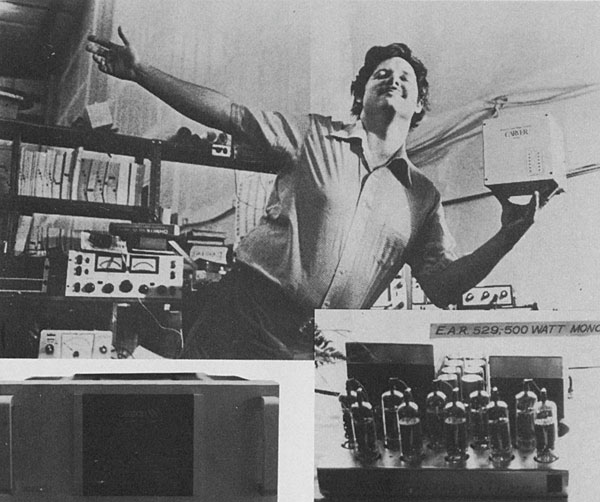Chicago, Chicago . . . Page 2

Perhaps the most over-engineered but impressive product at the show was the IRS (Infinity Reference Standard) loudspeaker system. It consists of two 7½ft-tall modules, one for mid/HF and one for LF. Twenty-four EMIT tweeters are placed in a vertical array facing forward with another dozen (wired in reverse phase) facing backwards. Meanwhile, 12 EMIM midrange units fire forward, also in a vertical array.
The EMIMs and EMITs are housed in a curved housing to optimise diffraction, made out of laminated woods and superbly finished in rosewood, with hollow wings filled with sand to dampen vibrations. The woofer modules each contain six 12in polypropylene coned speakers driven by a 1500W amplifier.
The system was demonstrated using both digital master tapes by Soundstream, including the Telarc 1812 Overture, and analogue tapes by Reference Recordings of Los Angeles. After a superb dem, it is somewhat churlish to say that the potentially superb imaging properties offered by the line source array and controlled diffraction were not revealed by the use of recordings that simply didn't contain coherent stereo information.

'Digital Ready', 'Ready for the digital challenge', 'Good enough for digital', and other such slogans applied to everything from speakers to accessories, were common at the show, but no speaker seemed more 'ready', either in dynamic range or bass extension, than Cerwin Vega's SR-2 Monitor, seen below acting as a support for a weeping fig.
Company designer Marshall Buck has done a lot of work into human perception of very low frequencies, concluding that people can 'hear' frequencies of 10-12Hz at circa 120dB SPLs. The SR-2 embodies some of the results of this work.
The audible bass extension, on a digital tape recording that was being played through the speakers, was simply staggering, and I fully believed the claim that the SR-2 would give a maximum continuous SPL at 1m of 135dB. Frequency response is claimed to be 28Hz-18kHz and the speaker uses an 18in dual-spider woofer in a 6th-order Butterworth vented box before crossing over at 150Hz to a 12in coaxial mid/treble unit. The box interior is made effectively larger by filling it with inert gases in acoustically transparent pouches, a technique used by Cerwin Vega.
Meanwhile, sensitivity is said to be an astonishing 101dB at 1m for 1W and amps up to 1000W are recommended. Price will be around $3400 per pair – $25 per dB or 19 cents per Hz, depending on how you want to look at it.

Sony's 'Stowaway' cassette player has immediately spawned a host of contemporaries. This recorder, from Aiwa, was being demonstrated most attractively by one of Chicago's own Bunnies – one couldn't imagine any other place but heavy and hypocritical Chicago, it being the birthplace of the whole sanitised sex Playboy business. Penthouse magazine was going one better and offering dealers a 'Penthouse Pet' in their store for a whole day.

It seems daft to go all the way to Chicago to hear Jim Rogers' new speaker, but that's what happened. Finished in Nextel, the tiny 'Metro' perhaps offers a more 'English' view of the micro-speaker. Price will be under £120 per pair. Here it is with the cylindrical JR149/150 designs.

Power amps continue to come in all shapes, sizes and weights, ranging from the 400W Carver Magnetic Field power amp, being held here by designer Bob Carver, to a 1kW bi-amping module from ADS. Hafler has now introduced the promised bridged-mono version of the MOSFET DH200, named the PRO-300, which will deliver 350W into 8ohm while Tim de Paravicini's Esoteric Audio Research was inviting us to 'experience the audible difference' with a mono tube design said to offer 500W at 0.8% THD.
With the Japanese going overboard for signal-controlled biasing, giving, hopefully, Class A operation but at Class-B-ish efficiencies, Stax was going it alone with its DA-100M mono 100W design which follows its lower power models in being 'real' Class A and having a very low LF roll-off (the company quotes –3dB points as DC-500kHz).
























































